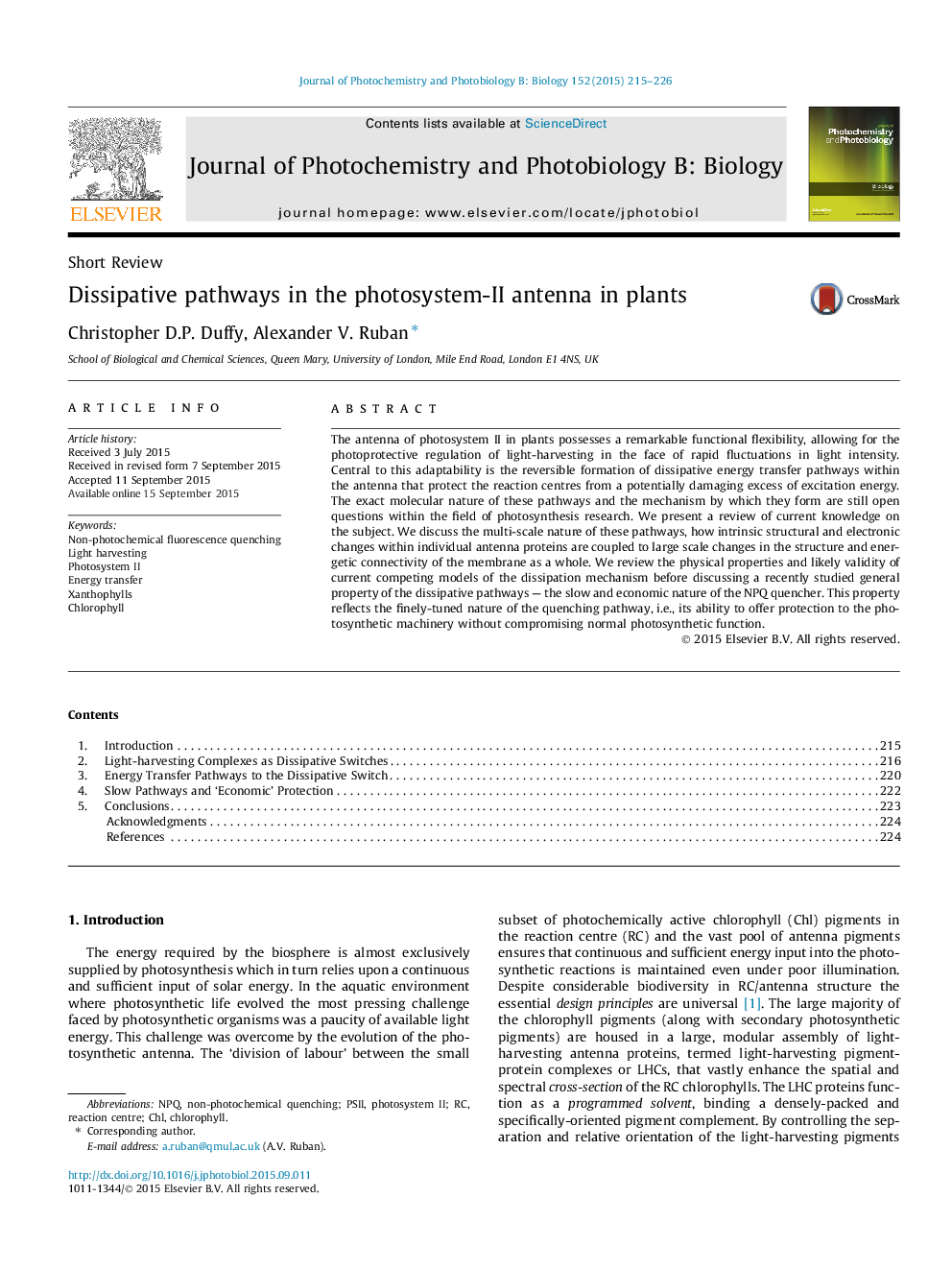| Article ID | Journal | Published Year | Pages | File Type |
|---|---|---|---|---|
| 29650 | Journal of Photochemistry and Photobiology B: Biology | 2015 | 12 Pages |
•The state of knowledge of the energy dissipation pathway, NPQ, is reviewed.•The multiscale nature of the NPQ mechanism is discussed.•Analysis of several models of NPQ unravelled its slow and economic nature.
The antenna of photosystem II in plants possesses a remarkable functional flexibility, allowing for the photoprotective regulation of light-harvesting in the face of rapid fluctuations in light intensity. Central to this adaptability is the reversible formation of dissipative energy transfer pathways within the antenna that protect the reaction centres from a potentially damaging excess of excitation energy. The exact molecular nature of these pathways and the mechanism by which they form are still open questions within the field of photosynthesis research. We present a review of current knowledge on the subject. We discuss the multi-scale nature of these pathways, how intrinsic structural and electronic changes within individual antenna proteins are coupled to large scale changes in the structure and energetic connectivity of the membrane as a whole. We review the physical properties and likely validity of current competing models of the dissipation mechanism before discussing a recently studied general property of the dissipative pathways — the slow and economic nature of the NPQ quencher. This property reflects the finely-tuned nature of the quenching pathway, i.e., its ability to offer protection to the photosynthetic machinery without compromising normal photosynthetic function.
